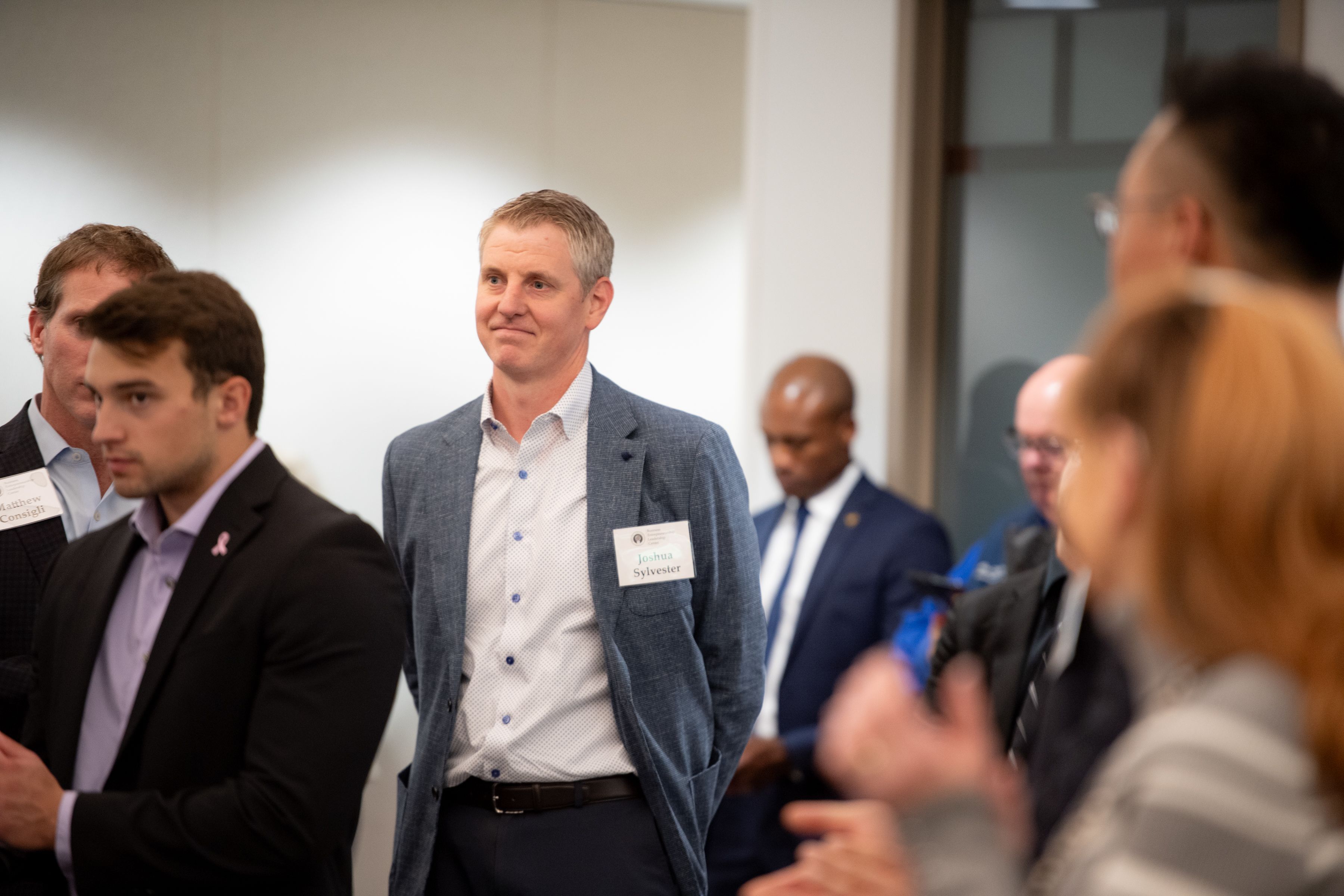The Vision, Unveiled:
How Bryant transformed a 250,000-square-foot office building into cutting-edge Business Entrepreneurship Leadership Center
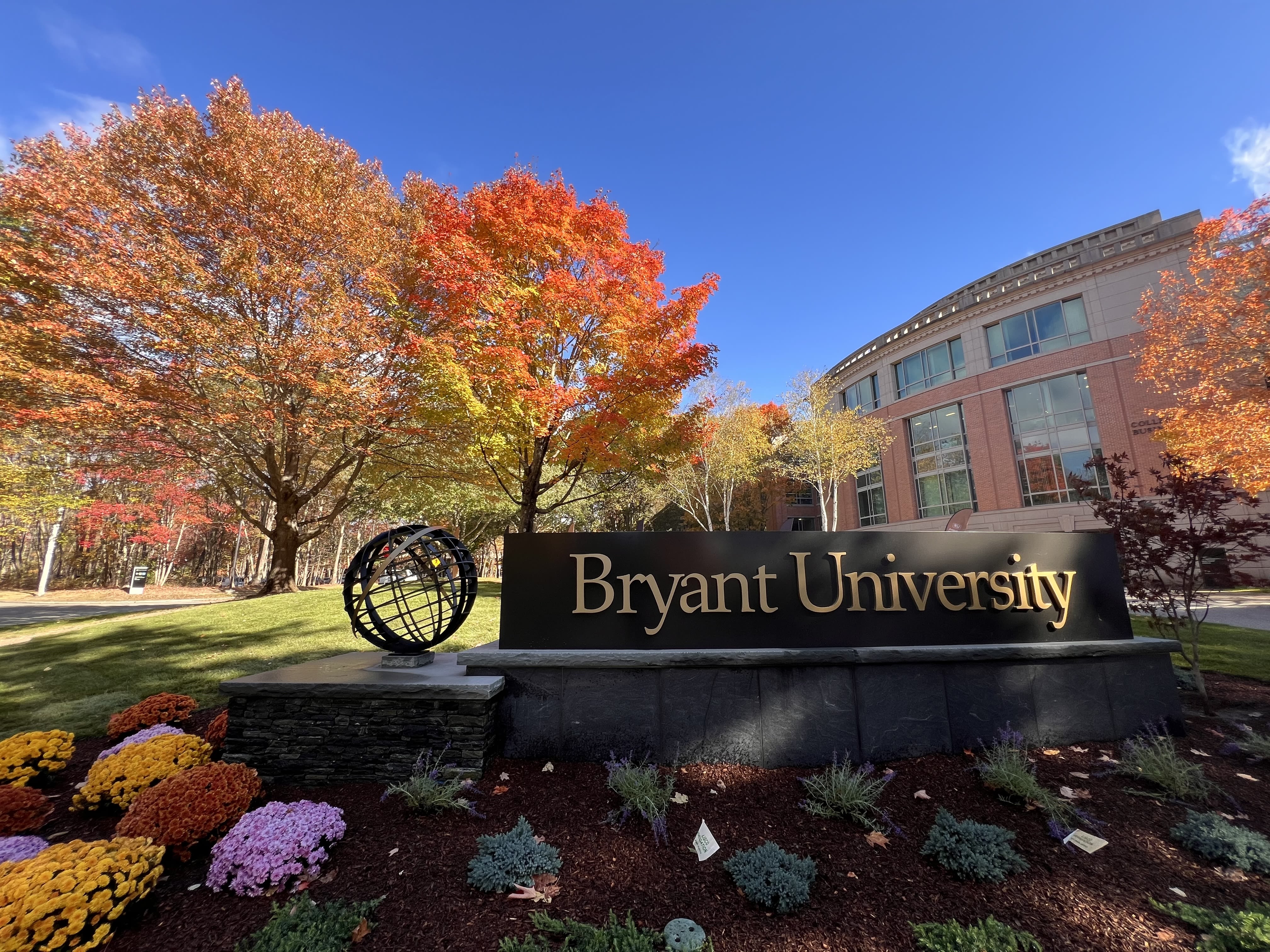
Six months.
That was the timeline, from closing table to opening day, to transform a 250,000-square-foot administrative building into the Business Entrepreneurship Leadership Center (BELC), a cutting-edge academic hub and new home for Bryant University’s College of Business in Smithfield, Rhode Island.
Some leaders might’ve deemed this plan overly optimistic. Others, impossible. But Bryant President Ross Gittell, Ph.D., saw an opportunity to reveal, through bricks and mortar, an institutional spirit of innovation, tenacity, and confidence about the future that, with purposeful collaboration, could be fully realized.
“We’re at a point in time where, in higher education, there’s a degree of negativity and myopia,” says Gittell. “It takes a long time to get things done. But this is a story of forward-thinking, strong collective will and execution.”
Under Gittell’s leadership, in 2022, Bryant unveiled its Vision 2030 strategic plan, which sets the pace for investments in areas including academic programming, student life and athletics, access and economic mobility, and community and belonging. So when Fidelity Investments, a prominent corporate partner with more than 700 Bryant alumni employees, approached the institution about donating the building, Gittell — an economist with scholarly expertise in economic redevelopment — says the decision to accept was one of the easiest of his presidency, which is entering its fifth year.
“We’re building on Vision 2030, and on a 161-year-old legacy of excellence,” he says. “We knew what we needed to do to inspire our students to define, and achieve, their own success.”
Student interest in Bryant has never been stronger with record applications for three consecutive years, Gittell adds, and the university was already exploring ways to expand facilities while leaning into innovative pedagogy that reflects a changing world. The new building, Gittell says, would create space for Bryant to integrate data analytics and artificial intelligence across the curriculum, would serve as an incubator for leadership and entrepreneurship, and would expand experiential learning opportunities by drawing industry into labs equipped with advanced technologies.

Case Study for Expansion
Bryant’s choice to expand through adaptive reuse could serve as a case study for other institutions, says project architect Kevin Petersen, principal at Ayers Saint Gross, an interdisciplinary design firm of architects, planners, landscape architects, interior designers, graphic designers, and space analysts.
A new higher education facility costs $800 per square foot to build — a $200 million price point. All told, Bryant dedicated $35 million to the renovation of the existing structure, a LEED Gold-certified building constructed in the 1980s and sited within a 30-acre nature preserve across from the existing campus. Not only did the Ayers Saint Gross design cut costs, says Petersen; it also intentionally reduced the project’s carbon footprint.
“It’s a really powerful economic story,” says Petersen, who collaborated closely with Gittell and Bryant’s Vice President for Business Affairs Donna Ng, as well as other institutional leaders, to create a design that balanced critical campus needs — including a distinct identity for Bryant’s nationally recognized College of Business — with the preservable aspects of the structure, including fixtures, ductwork, and even furniture.
Larger, strategic adjustments to the existing floorplan prioritized wayfinding and the development of specialized labs and flexible classroom spaces, as well as gathering and maker spaces. The plan was then shared with the Bryant community for feedback and refinement.
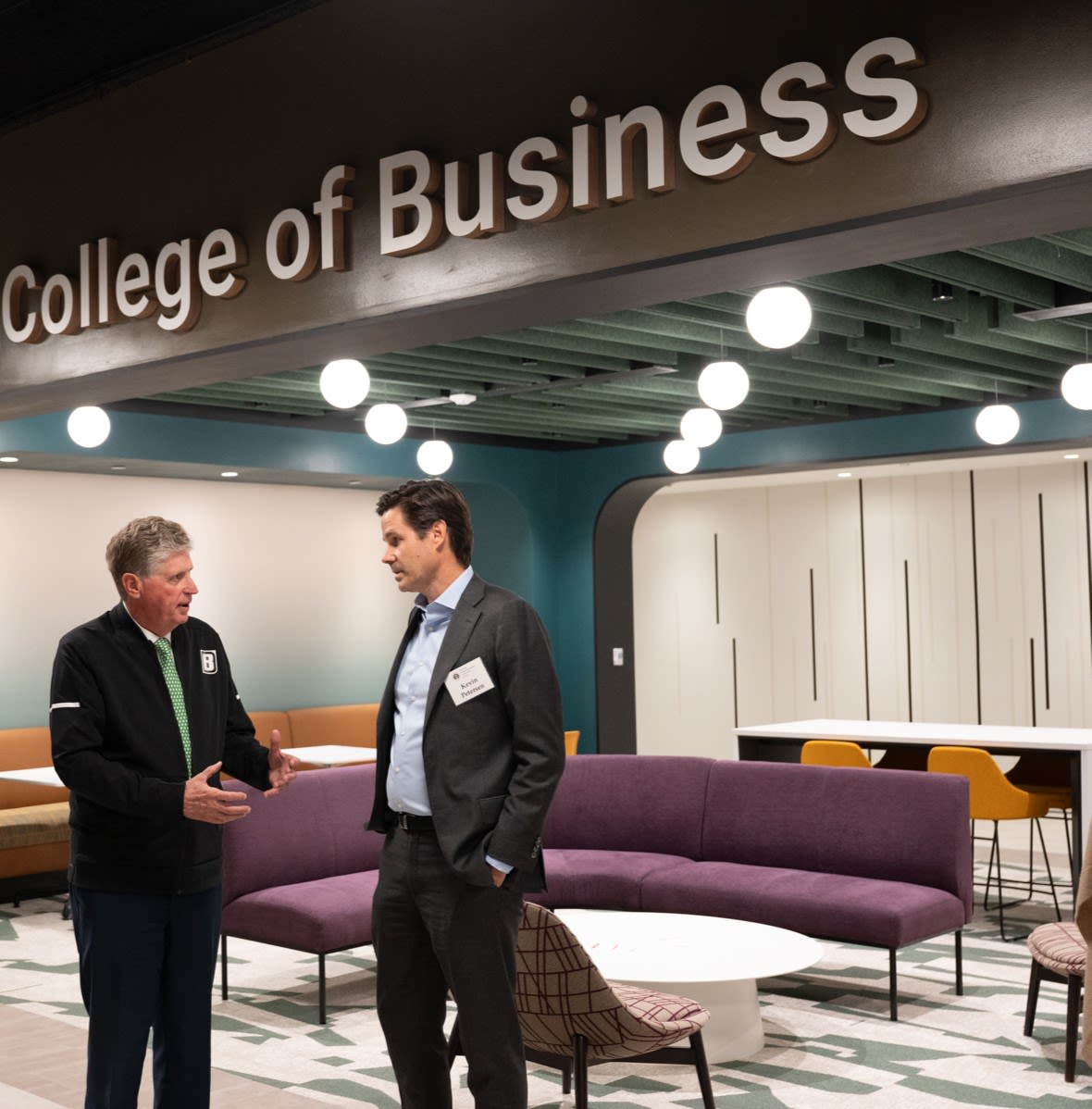
Innovation Meets Collaboration
“The beauty of a good project is everyone is swimming in the same direction, and for a good cause,” says Edward LeFlore, partner at CSL Consulting, a firm that provides construction consulting services that was tapped to coordinate the BELC buildout. “Our job was to put all the pieces together, from design to construction to audio/visual to facilities.”
Thankfully, LeFlore says, Bryant’s leadership, faculty, and staff were working in lockstep. An intensive strategic plan for the building, which was developed in the months leading up to the property transfer, in February of 2024, created a shared vision and allowed for nimble decision-making.
“This project meant so much to Bryant, and the leadership was able to provide resources to the project teams,” says LeFlore. “We worked within an extremely aggressive schedule that required boots on the ground, around the clock.”
Those boots included Liam Fluharty ’23, who served as project coordinator for the first and second floors of the four-level building. Fluharty helped orchestrate the creation of spaces including the Ellen Wilson Leadership Center, the Financial Markets Center, the Frank ’81 and Marion ’81 Hauck Sales Performance Lab, and others.
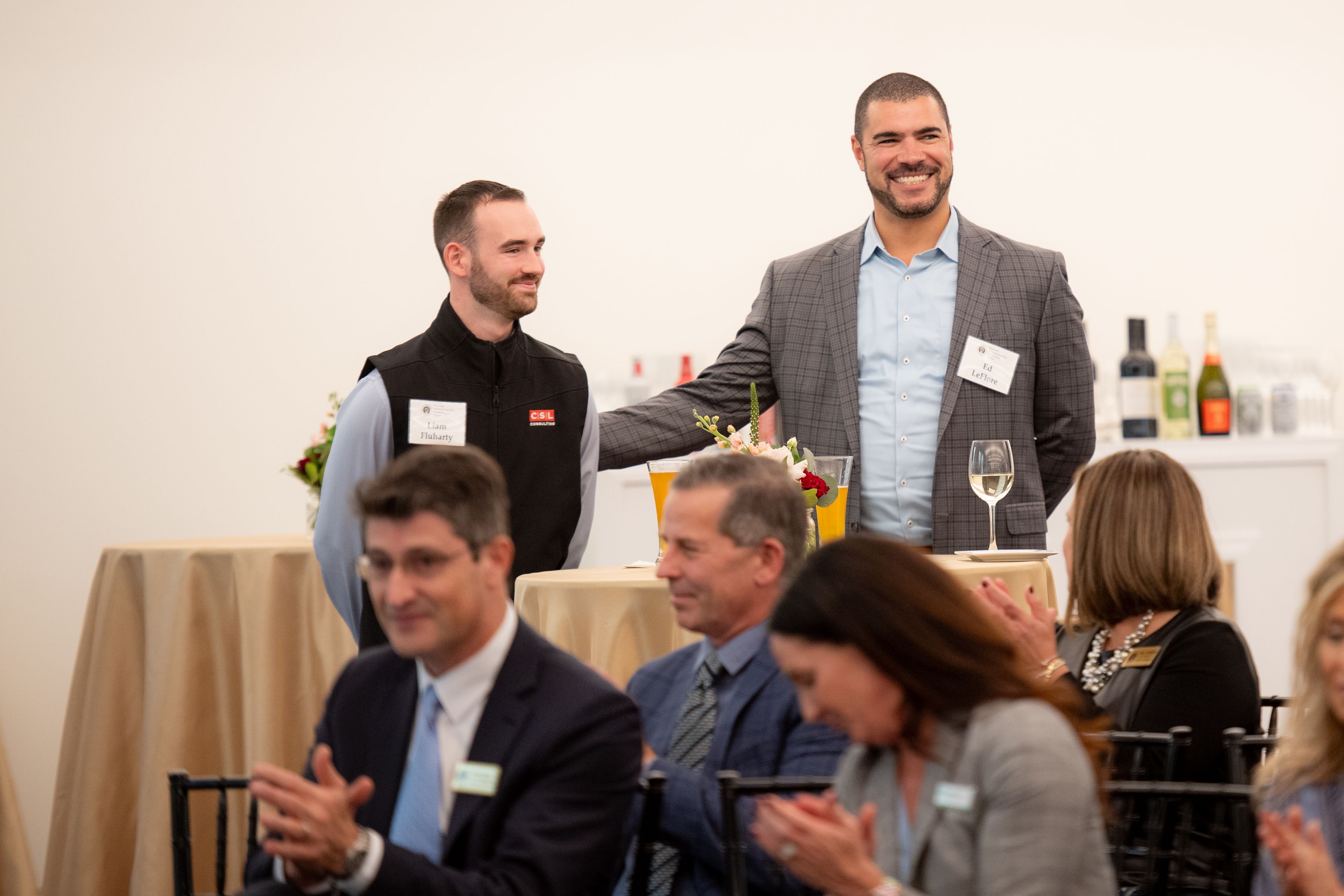
“I had an incredibly transformational experience at Bryant, and the BELC is going to ensure Bryant continues to provide that experience to students in the future,” Fluharty says.
That future was built with the emerging technologies of today, says Joshua Sylvester, regional director of Consigli Construction Co., Inc., one of the largest 100 percent employee-owned construction managers on the East Coast with extensive experience delivering innovative higher education projects. Consigli deployed laser scanning technology to develop a plan for the building to mitigate scheduling and budget impacts. The scanner, Sylvester explains, prevents a snowball effect in construction, where one shift in ductwork could create a time-consuming and costly cascade.
With a tight summer construction schedule, Consigli’s build out of the BELC had to be precise with extreme attention to detail, from the windows, which draw in an abundance of light and views of the surrounding preserve, to community spaces that foster connection between students, faculty, corporate partners, and mentors from Bryant’s 50,000-strong alumni network.
Joshua Sylvester of Consigli Construction Co., Inc., at the BELC Grand Opening.
Joshua Sylvester of Consigli Construction Co., Inc., at the BELC Grand Opening.
“The biggest takeaway, for me, was this culture of collaboration and innovation,” Sylvester adds. “We all understood the mission and reached across the table to get to the finish line. Bryant owned that mantra of collaboration and determination to achieve their goals.”
On September 4, when Bryant students stepped into the BELC, they might not have noticed the feats of strategy and agility that led to that moment — a unique approach within the competitive and slow-to-change higher education landscape. But, in every lab and center and gathering space, the BELC’s newest stewards will be prepared to tackle challenges head-on, and with that same spirit of tenacity and innovation.
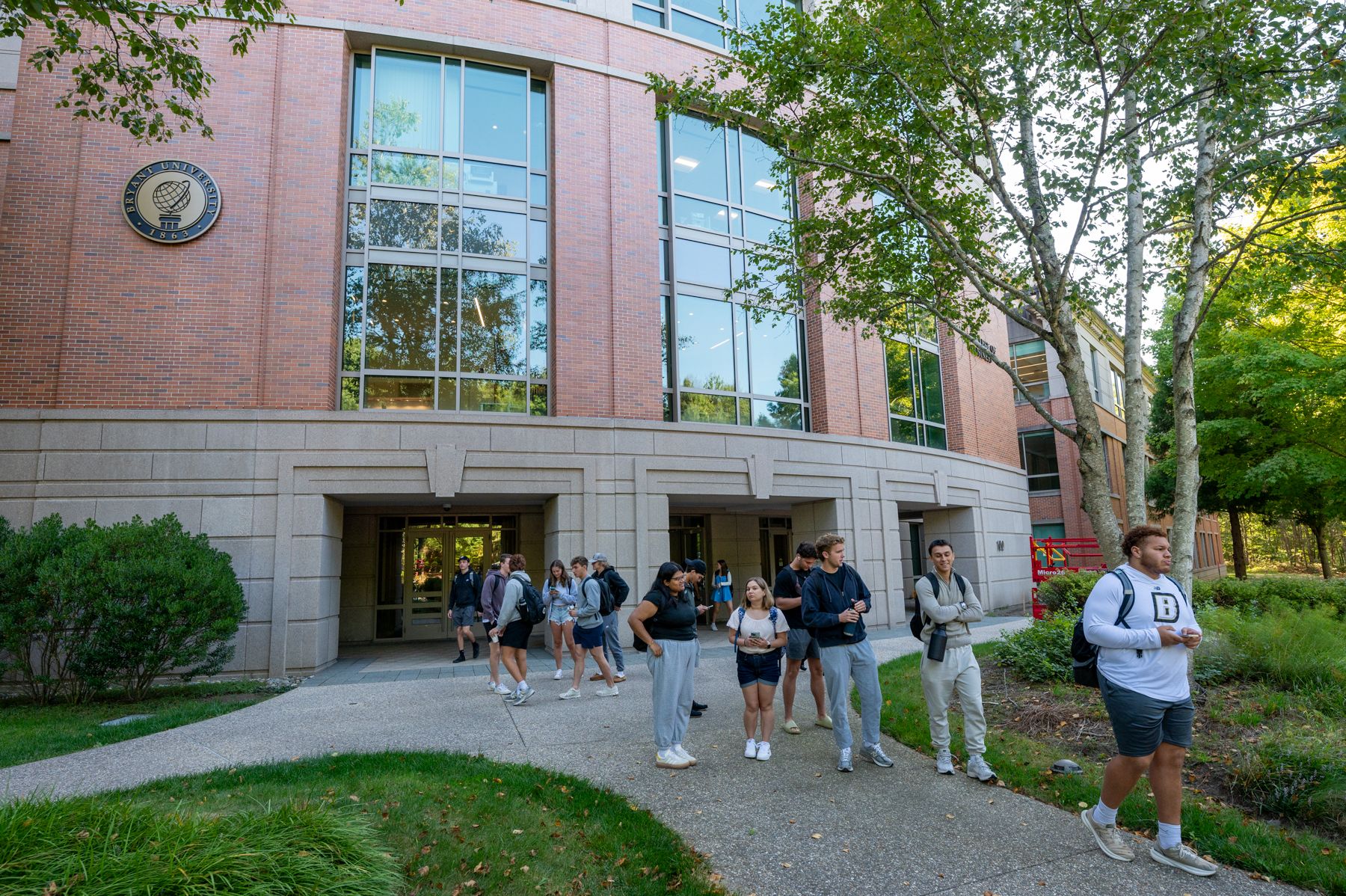
This content was paid for and created by Bryant University. The editorial staff of The Chronicle had no role in its preparation. Find out more about paid content.




